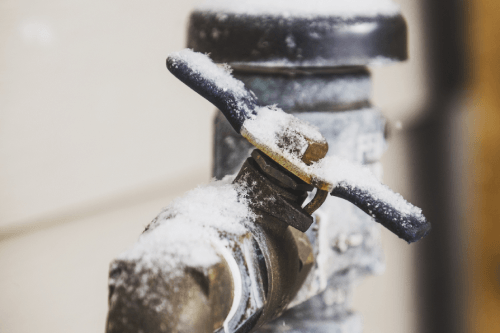Protecting Against Frozen Plumbing in Cold Weather: Key Advice
Protecting Against Frozen Plumbing in Cold Weather: Key Advice
Blog Article
We have noticed the article involving 6 Ways to Prevent Frozen Pipes down the page on the internet and accepted it made perfect sense to write about it with you here.

Winter can wreak havoc on your plumbing, specifically by freezing pipelines. Below's exactly how to stop it from occurring and what to do if it does.
Introduction
As temperature levels drop, the danger of icy pipelines rises, potentially bring about costly repair work and water damages. Comprehending exactly how to avoid frozen pipes is crucial for property owners in cool climates.
Understanding Icy Pipes
What triggers pipelines to freeze?
Pipes ice up when subjected to temperature levels listed below 32 ° F (0 ° C) for expanded durations. As water inside the pipes freezes, it broadens, putting pressure on the pipeline walls and possibly causing them to rupture.
Risks and damages
Frozen pipelines can result in water supply disturbances, residential property damages, and expensive fixings. Burst pipelines can flood homes and trigger considerable structural damage.
Indications of Frozen Water Lines
Identifying icy pipelines early can prevent them from rupturing.
How to determine frozen pipelines
Try to find decreased water flow from faucets, unusual smells or sounds from pipes, and noticeable frost on exposed pipes.
Avoidance Tips
Protecting vulnerable pipelines
Cover pipes in insulation sleeves or make use of heat tape to shield them from freezing temperatures. Concentrate on pipelines in unheated or outside locations of the home.
Home heating methods
Maintain indoor areas appropriately warmed, particularly locations with plumbing. Open cupboard doors to allow warm air to distribute around pipelines under sinks.
Securing Exterior Pipes
Yard hoses and outside taps
Separate and drain pipes yard hoses before winter season. Set up frost-proof spigots or cover outside taps with insulated caps.
What to Do If Your Pipelines Freeze
Immediate activities to take
If you think icy pipelines, maintain taps open to ease pressure as the ice melts. Utilize a hairdryer or towels taken in warm water to thaw pipes slowly.
Long-Term Solutions
Architectural modifications
Consider rerouting pipes far from outside walls or unheated areas. Include additional insulation to attic rooms, basements, and crawl spaces.
Upgrading insulation
Invest in high-quality insulation for pipelines, attic rooms, and wall surfaces. Proper insulation aids maintain constant temperature levels and reduces the risk of frozen pipelines.
Final thought
Stopping icy pipes calls for proactive procedures and fast responses. By comprehending the reasons, indications, and preventive measures, house owners can shield their pipes during winter.
5 Ways to Prevent Frozen Pipes
Drain Outdoor Faucets and Disconnect Hoses
First, close the shut-off valve that controls the flow of water in the pipe to your outdoor faucet. Then, head outside to disconnect and drain your hose and open the outdoor faucet to allow the water to completely drain out of the line. Turn off the faucet when done. Finally, head back to the shut-off valve and drain the remaining water inside the pipe into a bucket or container. Additionally, if you have a home irrigation system, you should consider hiring an expert to clear the system of water each year.
Insulate Pipes
One of the best and most cost-effective methods for preventing frozen water pipes is to wrap your pipes with insulation. This is especially important for areas in your home that aren’t exposed to heat, such as an attic. We suggest using foam sleeves, which can typically be found at your local hardware store.
Keep Heat Running at 65
Your pipes are located inside your walls, and the temperature there is much colder than the rest of the house. To prevent your pipes from freezing, The Insurance Information Institute suggests that you keep your home heated to at least 65 degrees, even when traveling. You may want to invest in smart devices that can keep an eye on the temperature in your home while you’re away.
Leave Water Dripping
Moving water — even a small trickle — can prevent ice from forming inside your pipes. When freezing temps are imminent, start a drip of water from all faucets that serve exposed pipes. Leaving a few faucets running will also help relieve pressure inside the pipes and help prevent a rupture if the water inside freezes.
Open Cupboard Doors
Warm your kitchen and bathroom pipes by opening cupboards and vanities. You should also leave your interior doors ajar to help warm air circulate evenly throughout your home.

We had been made aware of that write-up about How to prepare your home plumbing for winter weather through an associate on our other web blog. I beg you take a moment to promote this post if you appreciated it. Kudos for being here. Don't hesitate to come visit our site back soon.
Get Quote Report this page